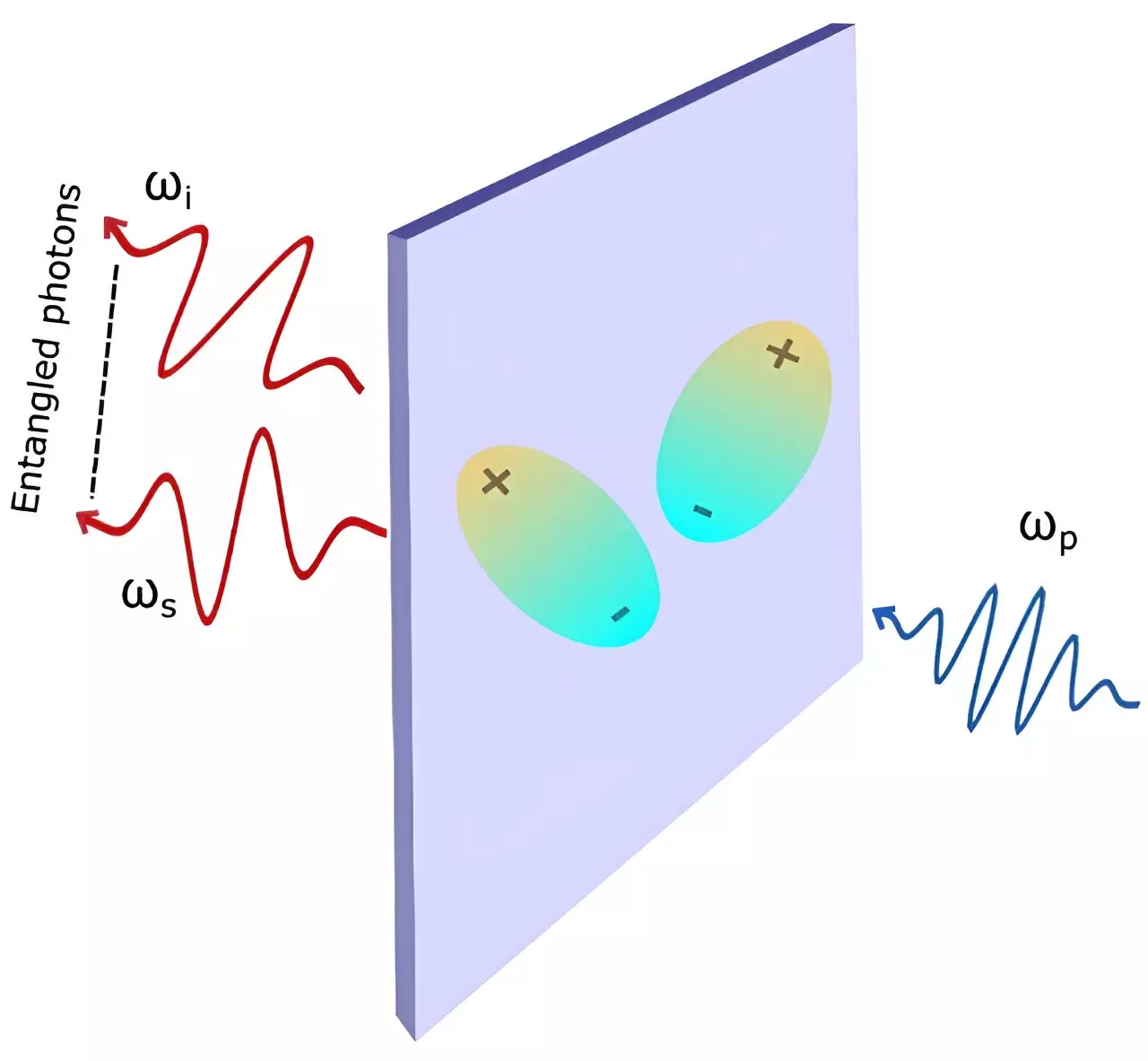Recent advancements in the field of quantum technologies have unveiled exciting possibilities for the development of efficient quantum light sources. A critical aspect of this progress stems from a study conducted by researchers at the National University of Singapore (NUS), focusing on the generation of entangled photon pairs. Quantum entanglement, a phenomenon where quantum particles exhibit interdependence regardless of the distance separating them, serves as a fundamental pillar for numerous quantum applications. Achieving efficient entangled photon production is paramount for technologies such as quantum computing and quantum cryptography, making the findings of this research both timely and significant.
The Mechanics of Photon Generation
Traditionally, entangled photons are produced through a process known as spontaneous parametric down-conversion (SPDC). In this process, a “pump” beam of light is directed onto non-linear optical crystals, which facilitates the conversion of a single photon into a pair of entangled photons. However, SPDC has been criticized for its inefficiency, often yielding less than desirable quantities of entangled photon pairs. The NUS researchers, led by Associate Professor Su Ying Quek, proposed a novel approach to enhance the efficiency of this process by focusing on the excitonic resonances present within the crystal structure.
Excitons, which constitute pairs of negatively and positively charged particles formed through the interaction of light with a non-linear optical crystal, emerge as a pivotal element in this research. These quasiparticles can significantly influence the efficiency of SPDC by altering how the crystal responds to light. In essence, the proximity of these charges, which increases during excitonic interactions, plays a crucial role in enhancing the likelihood of successful photon pair generation. The study demonstrated that when the excitons are closer together, driven by the energy or frequency of the light, the probability of generating entangled photon pairs also rises.
The researchers conducted their analysis using cutting-edge quantum mechanical calculations to explore the non-linear optical responses of the materials involved. Dr. Fengyuan Xuan, the principal investigator of the project, emphasized the shortcomings of traditional modeling approaches that often overlook the significance of excitonic interactions. By incorporating these vital interactions into their simulations, the team was able to present a more accurate depiction of how the properties of light and matter interrelate during the SPDC process.
One of the breakthroughs highlighted by the researchers is the utilization of ultrathin crystals for SPDC. Historically, these materials were often disregarded due to assumptions that their limited volume would result in lower efficiency. However, the research illuminated the potential benefits of using ultrathin structures, particularly in mitigating a technical hurdle known as the phase matching problem—a challenge in aligning the energies of the interacting beams for optimal performance. The findings suggest that stronger excitonic interactions in ultrathin materials can counterbalance the inefficiency typically associated with reduced material volumes.
Through systematic explorations utilizing NbOI2, a layered non-linear optical material, the team successfully simulated the generation of entangled photons while confirming their results against experimental data. Additionally, they identified that frequency matching within the crystal could further amplify the production of entangled photons. The implications of these discoveries are vast, paving the way for more effective quantum light sources that can seamlessly integrate into advanced hybrid quantum-photonic systems.
The integration of excitonic effects into the SPDC process represents a transformative shift in the generation of entangled photons. This research not only opens doors to improved efficiencies but also enhances our understanding of quantum phenomena, positioning scientists and technologists to harness these insights for future quantum innovations. Through ongoing exploration and experimentation, the vision of robust, efficient quantum light sources is becoming increasingly attainable, promising to reshape the landscape of quantum technology as we know it.


Leave a Reply